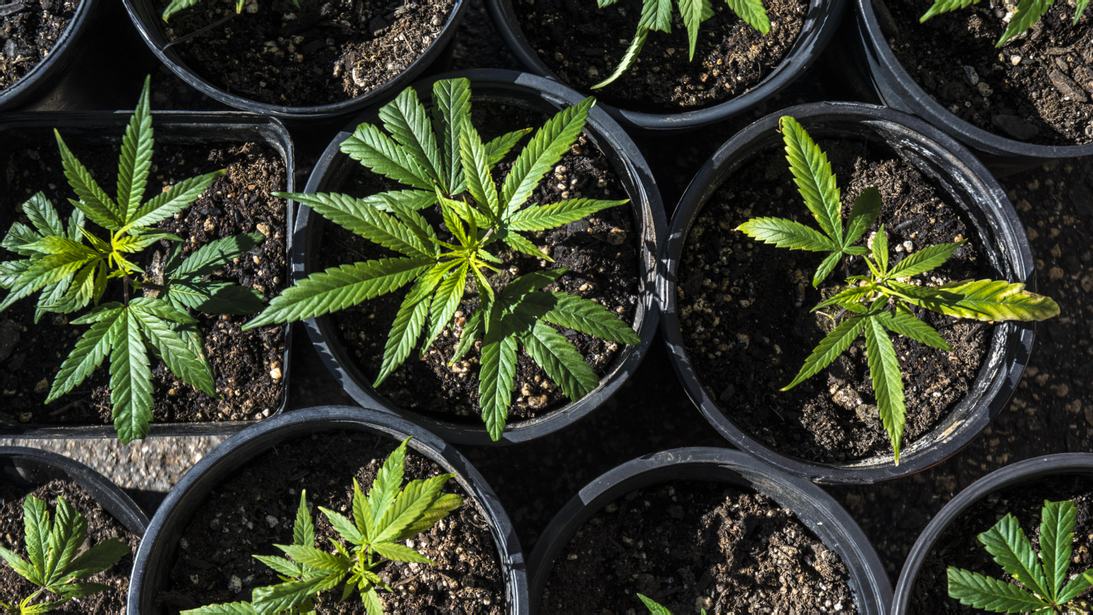How Tissue Culture is changing the game for Cannabis Users
Read up on this new alternative approach to growing cannabis.

While many people are familiar with the idea of growing plants from seed or cuttings, not everyone knows about the alternative approach of using tissue culture. Tissue culture is a relatively new technique in cannabis propagation, but it offers many advantages over other methods. In tissue culture, small remnants of plants, such as clumps of cells, can be used to create an exact clone with specific characteristics. This contrasts with the approach of randomly mixing genetic pools from different plants grown in soil or hydroponically. In addition, tissue culture is less susceptible to pests, fungi, and other diseases than conventional cultivation practices because it uses sterile environments for growth and containment. And for all the homegrowers, yes, you CAN try this at home. So whether you’re a casual user or a soon-to-be cannabis industry employee, tissue culture can be a more reliable method of propagation and may result in a stronger product. Here’s what you should know about it.
The history of tissue culture in modern agriculture dates to the early 20th century. It was developed by German botanist Gottlieb Haberlandt, who recognized the potential of culturing plant cells outside their natural environment. As the co-author of a 1902 paper which sought to use a selection of leaf mesophyll tissue to create a new plant, Haberlandt was initially unsuccessful, but set the stage for what is now called totipotency. Totipotency refers to the ability of a cell to differentiate into any embryonic cell, giving biologists a potentially new way to create new plants. This promise was fully realized in 1958, when plant biologist Frederick C. Steward grew a carrot from its root cell. Steward’s process has since been used to reproduce all sorts of plants, including tobacco, bananas, orchids and abaca — and of course, cannabis.
From Tissue Culture to Cannabis Culture
The first studies on tissue culture and cannabis were, unsurprisingly, performed on its legal cousin, hemp. A 1986 paper determined that tissue culture descendants of the original plant kept their physical and chemical properties. The same held true when tissue culture was applied to medical cannabis plants decades later. For medical cannabis companies where consistency of plants is crucial, tissue culture is increasingly embraced. In 2022, Curio Wellness partnered with Clemson University’s College of Agriculture, Forestry and Life Sciences to further explore how tissue culture, or micropropagation can aid in genetic preservation. Other companies exploring this space include Alliance Growers Corporation and Ascent Industries.
However, tissue culture can also be performed by homegrowers, provided they can master sterile growing techniques. Tissue culture kits are available on the internet, and if successful, the potential to scale genetically reliable plants is vast. Following are the stages growers often use to reach this pinnacle
Explant Preparation: Here, a small piece of plant tissue is taken from a healthy mother plant. The tissue, also known as an explant, can be a leaf, stem, or a meristem (particularly with cannabis, the apical meristem is used, as these cells, located near the tip of the roots, are highly totipotent). The explant should be sterilized to remove any bacteria or fungi that may be present.
Initiation: Next, the sterilized explant is placed into a culture medium, which is a nutrient solution that provides the necessary nutrients for the tissue to grow. The culture medium is typically supplemented with growth regulators, such as hormones, to promote the growth of the tissue. Depending on the specific periods of this stage, hormones will be swapped out.
Multiplication: After the explant has been placed in the culture medium, it begins to divide and form multiple cells, which will eventually form a mass of tissue known as a callus. The callus can then be sub-cultured to increase the number of cells. This improves on cloning, as one tissue can create multiple calluses, which means multiple plants.
Rooting: Once enough cells have been multiplied, the callus can be induced to form roots by adding a rooting hormone and placing it in a rooting medium.
Acclimatization: After the plants have formed roots, they are removed from the culture medium and placed in a growing medium such as soil, to acclimatize them to the environment. The plants will be exposed to light, water, and air, which will help them adapt to their new environment. This is referred to as the “hardening-off” period.
Transplantation: After the plants have acclimatized, they can be transplanted into their final growing medium, such as soil or hydroponics. At this stage, the plants will begin to grow and develop normally.
As those who have worked with clones know, mother plants can become stressed during production, passing on nasty mutations to their clones. Clones can also inherit the same molds and diseases, including the dreaded hop latent viroid pestilence that has dogged large-scale cultivators. Tissue culture provides a strong defense against these sorts of infections.
Cannabis cultivators are continuing to learn more about how to utilize this tool for growing. Those growing orchids or bananas have been able to legally conduct research on their crops for decades, while cannabis still labors under lingering stigmas. But people are definitely making up for lost time, and chances are that if your favorite preroll, edible or concentrate is consistently pleasing you, tissue culture is and will continue to be a big part of the reason why.
